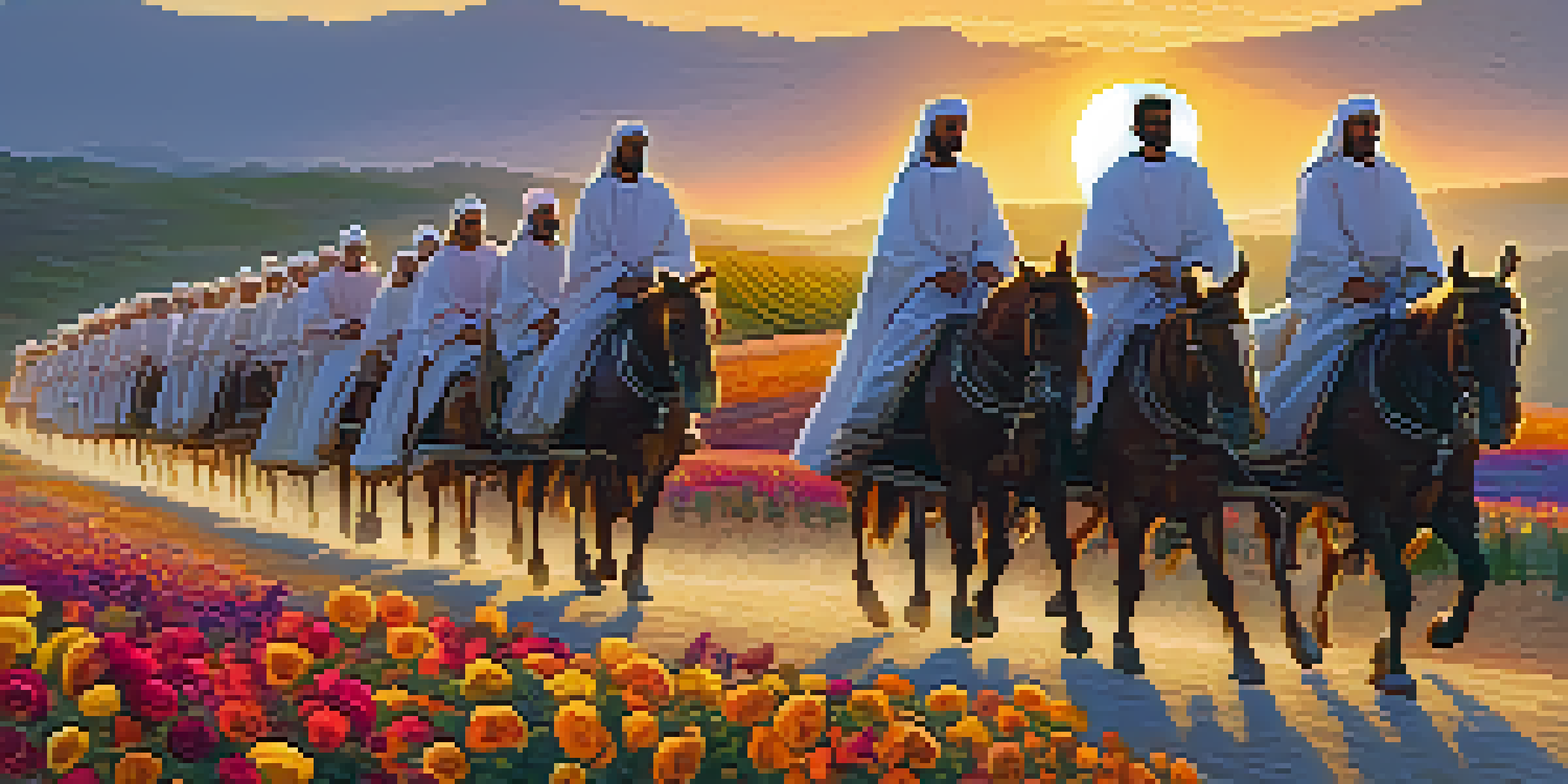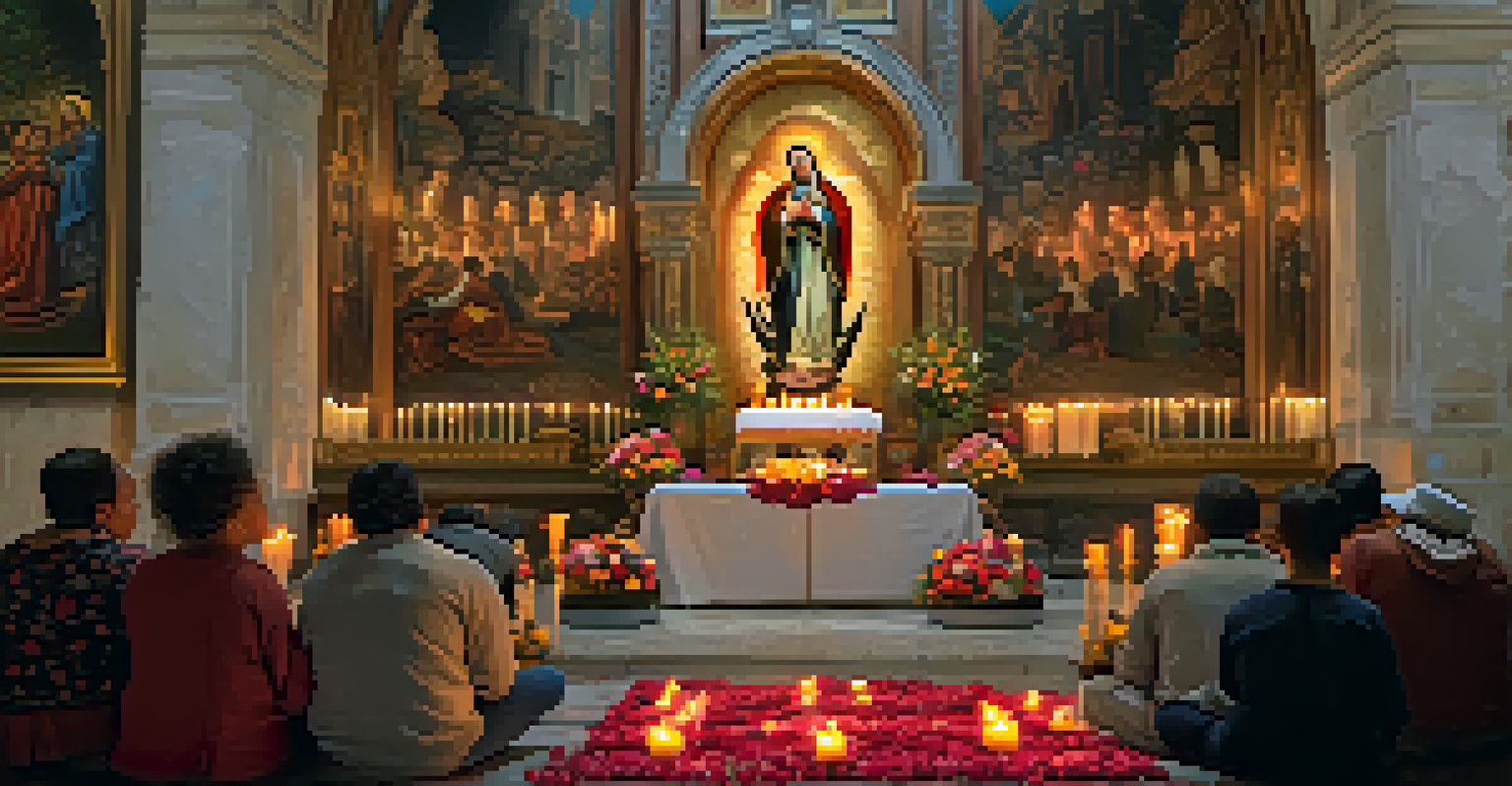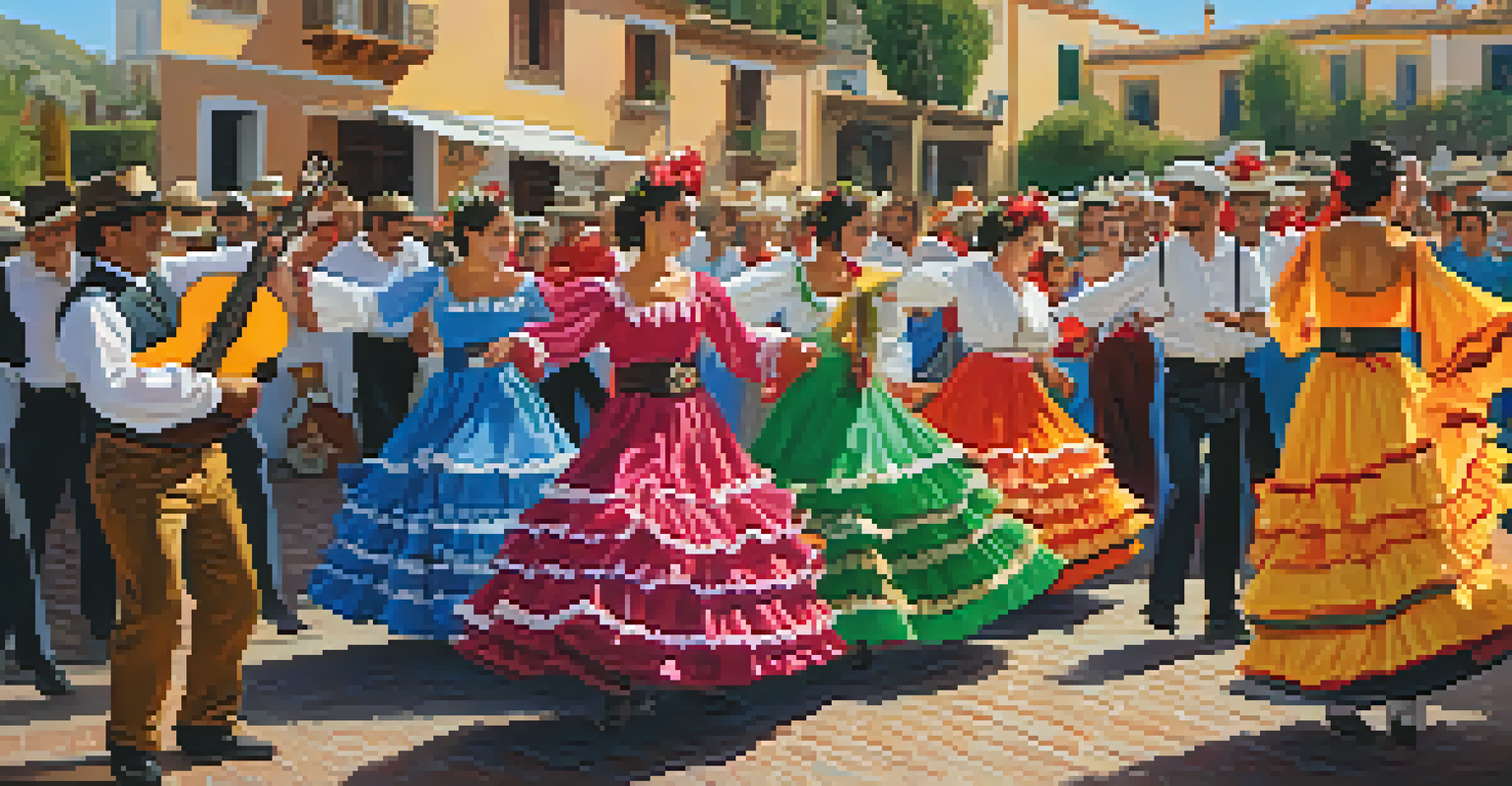The Tradition of the Romería del Rocío Pilgrimage in Huelva

Romería del Rocío: A Glimpse into History
The Romería del Rocío pilgrimage has deep historical roots, dating back to the 13th century. It originally began as a local devotion to the Virgen del Rocío, a revered figure in Andalusian culture. Over the centuries, this event has transformed from a small gathering into one of Spain's largest and most colorful pilgrimages.
The journey is the destination.
Every year, thousands of devotees journey to the village of El Rocío in Huelva, often traveling on foot, horseback, or in decorated wagons. This pilgrimage not only showcases the faith of the participants but also highlights the unique cultural expressions of the Andalusian people. The journey itself becomes a celebration of community and devotion.
Historically, the pilgrimage reflects the fusion of religious devotion with local customs, illustrating how traditions can evolve while maintaining their spiritual essence. Today, Romería del Rocío stands as a significant part of Spain's cultural landscape, attracting pilgrims and tourists alike.
The Spiritual Significance of the Pilgrimage
At its core, the Romería del Rocío is a deeply spiritual event, where participants seek the blessings of the Virgen del Rocío. Many pilgrims express their faith through prayers, songs, and offerings, creating a profound atmosphere of devotion. This spiritual journey fosters a sense of connection among participants, both with their faith and with one another.

The ritual of visiting the shrine of the Virgen del Rocío is central to the pilgrimage. People believe that the Virgin listens to their prayers and intercedes on their behalf, offering hope and solace. This belief strengthens the bond between the pilgrims and their faith, making each individual journey uniquely personal.
Romería del Rocío's Rich History
Dating back to the 13th century, this pilgrimage has evolved into one of Spain's largest cultural events, celebrating faith and community.
In addition to the spiritual aspect, the pilgrimage also serves as a reminder of the importance of community and collective faith. As pilgrims share their experiences, they foster a sense of belonging that transcends individual differences, highlighting the unifying power of shared traditions.
The Journey: From Preparation to Arrival
Preparing for the Romería del Rocío is a cherished tradition in itself, where families and friends come together to plan their journey. Participants often spend months getting ready, from decorating their wagons to selecting traditional clothing. This preparation builds excitement and anticipation for the pilgrimage ahead.
Tradition is not the worship of ashes, but the preservation of fire.
As the pilgrimage begins, the atmosphere is filled with joy and camaraderie. Pilgrims embark on their journey, often singing traditional songs and enjoying local delicacies along the way. Each step brings them closer to El Rocío, reinforcing their commitment to the Virgin and to each other.
Upon arrival, the sight of the shrine and the camaraderie of fellow pilgrims create an emotional experience that many describe as transformative. The moment is filled with joy, gratitude, and a profound sense of fulfillment, marking the culmination of their spiritual journey.
Cultural Expressions: Music and Dance
Music and dance play an integral role in the Romería del Rocío, with traditional Andalusian folk songs echoing throughout the pilgrimage. The vibrant sounds of guitars and flamenco rhythms create an infectious energy that invites participation from all. This musical backdrop enhances the celebratory atmosphere of the event.
Dancing is more than just entertainment; it serves as a means of expressing joy and devotion. Pilgrims often perform traditional dances, creating a lively environment that fosters a sense of unity. This fusion of spirituality and cultural expression showcases the unique identity of the Andalusian people.
Spiritual Unity Among Pilgrims
The pilgrimage fosters a deep spiritual connection among participants, enhancing their shared faith and sense of belonging.
Throughout the pilgrimage, participants share their stories and experiences through music and dance, forging connections that enrich the cultural tapestry of the event. These expressions not only celebrate the journey but also honor the heritage of the region, ensuring that the traditions endure for future generations.
The Role of Brotherhoods in the Pilgrimage
Brotherhoods, or 'hermandades', are vital to the organization and spirit of the Romería del Rocío. These groups, often formed by families or communities, take on the responsibility of planning and facilitating the pilgrimage. They play a significant role in preserving the traditions and ensuring the smooth flow of the event.
Each brotherhood has its own unique customs, rituals, and identity, contributing to the rich diversity of the pilgrimage. Members often dress in traditional outfits, carry banners, and participate in various ceremonies, showcasing their devotion and pride. This element of the pilgrimage fosters a sense of belonging and connection among participants.
The brotherhoods also extend their influence beyond the pilgrimage, engaging in charitable activities and community support throughout the year. Their commitment to both faith and community embodies the spirit of the Romería del Rocío, making it a truly collective experience.
The Festivities: Joy Beyond the Pilgrimage
The Romería del Rocío is not just a pilgrimage; it is a grand festival filled with joy and celebration. Once pilgrims arrive, the festivities kick off with lively gatherings, feasts, and social events, turning the town of El Rocío into a vibrant hub of activity. This joyful atmosphere attracts not only pilgrims but also visitors from all over the world.
Delicious local cuisine takes center stage during the festivities, with dishes like 'pescaito frito' and 'gazpacho' tempting the taste buds. Shared meals create bonds among pilgrims, as they come together to celebrate their faith while enjoying the rich flavors of Andalusian culture. The culinary aspect adds another layer to the communal experience.
Festivities Beyond the Journey
Upon arrival, the Romería del Rocío transforms into a vibrant festival, filled with food, music, and joyous celebrations that unite pilgrims and visitors alike.
Moreover, the festivities often include horse parades and traditional games, inviting everyone to partake in the joyous celebrations. This blend of spirituality and merriment symbolizes the essence of the Romería del Rocío, showcasing how faith and community can intertwine beautifully.
Preserving the Legacy of Romería del Rocío
As the Romería del Rocío continues to grow in popularity, preserving its traditions and values becomes increasingly important. Efforts are being made to ensure that future generations understand and respect the significance of this pilgrimage. Education and community involvement play key roles in maintaining the spirit of the event.
Many brotherhoods are actively engaging younger members, encouraging them to participate and contribute to the pilgrimage's organization. By fostering a sense of ownership and pride among the youth, these groups help secure the future of the Romería del Rocío. This intergenerational connection strengthens the bond of community.

Additionally, local authorities and cultural organizations are working to promote awareness of the pilgrimage's historical and cultural significance. Through workshops, exhibitions, and community events, the rich heritage of the Romería del Rocío is celebrated, ensuring that its legacy continues to thrive for years to come.